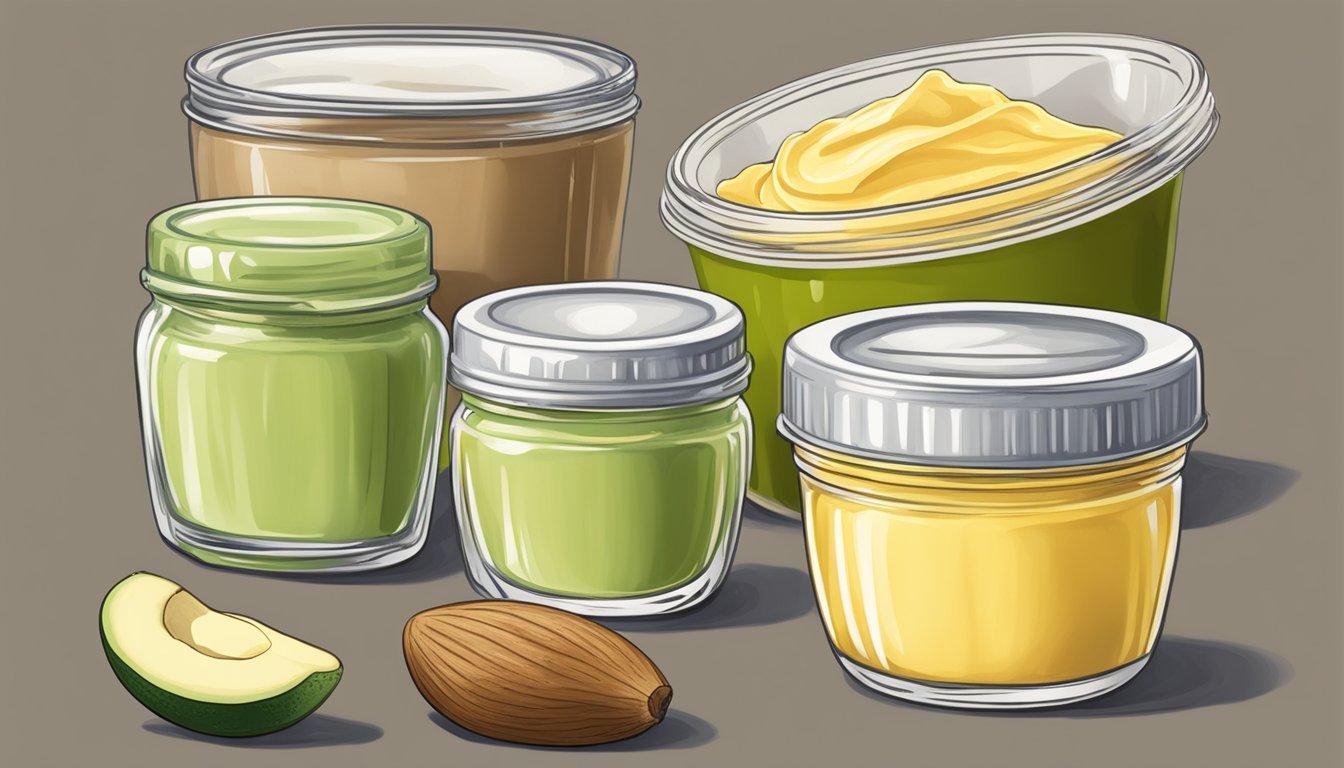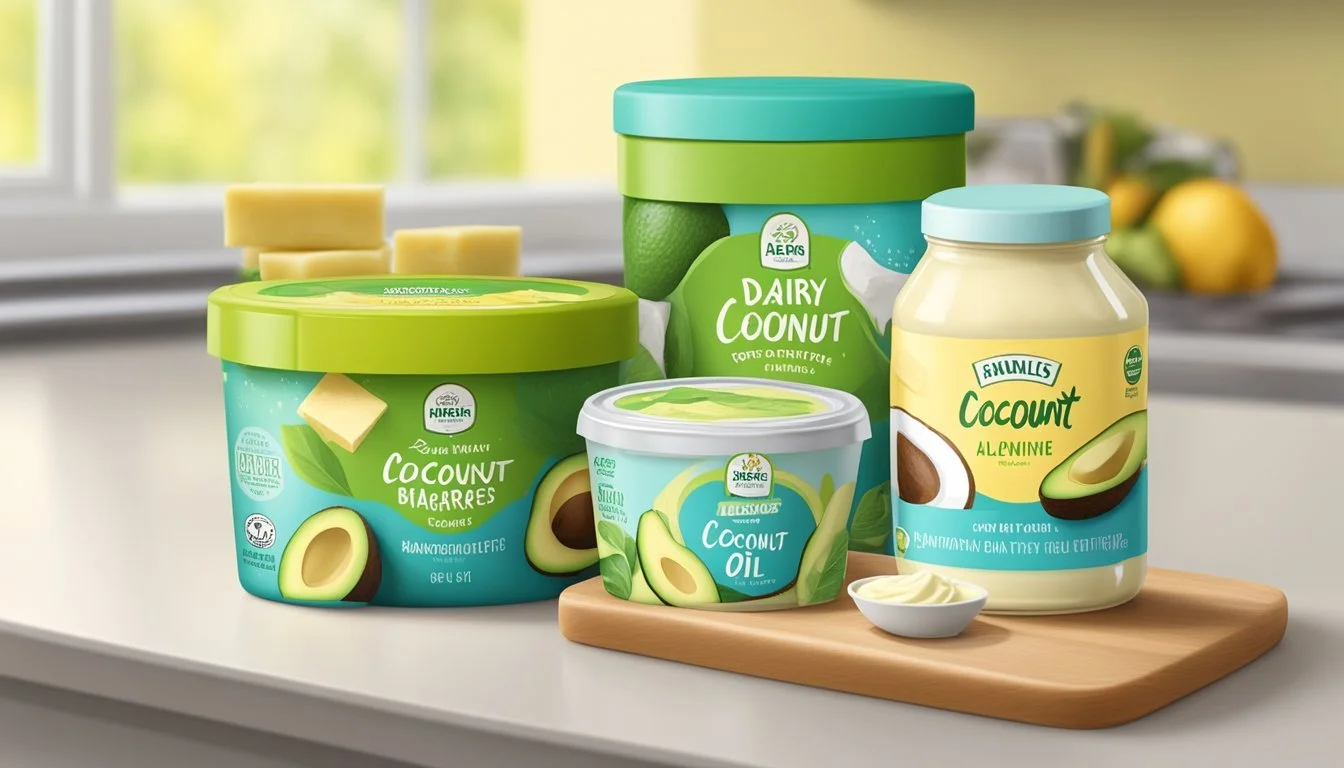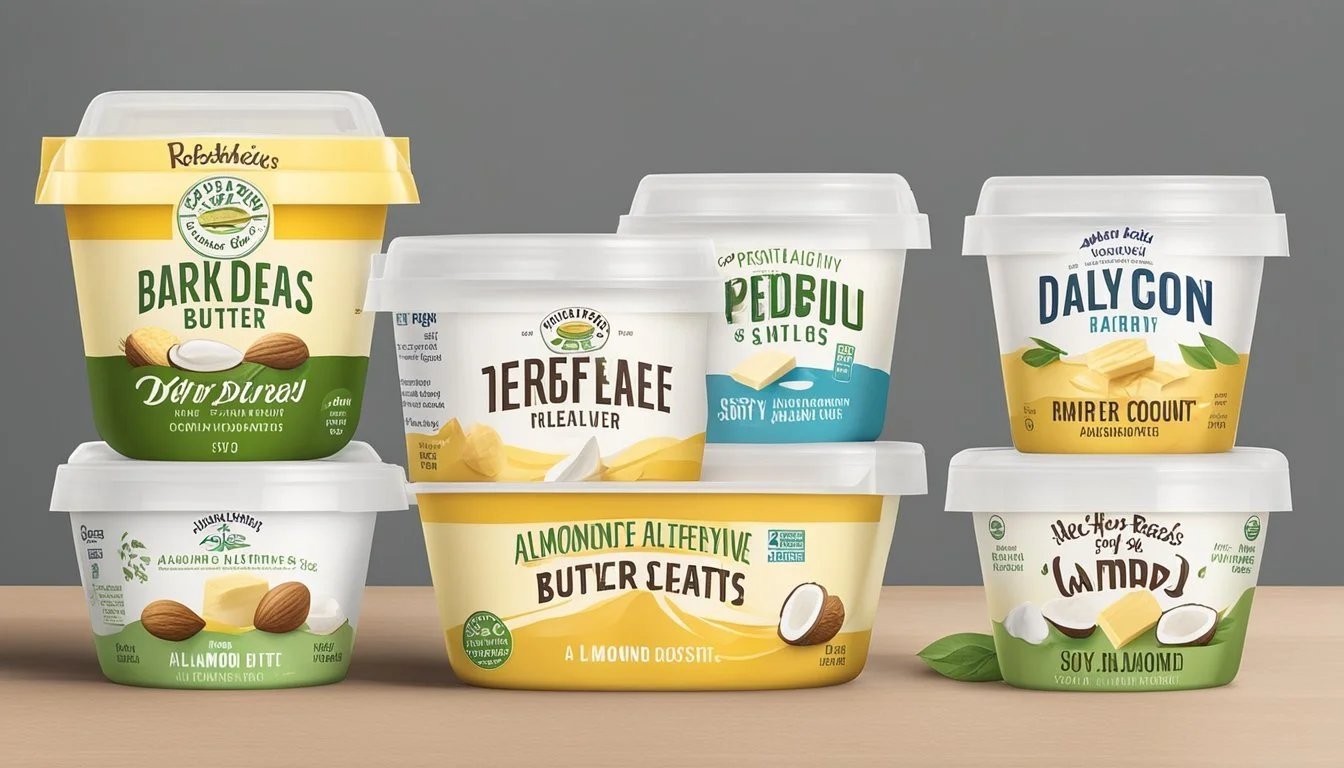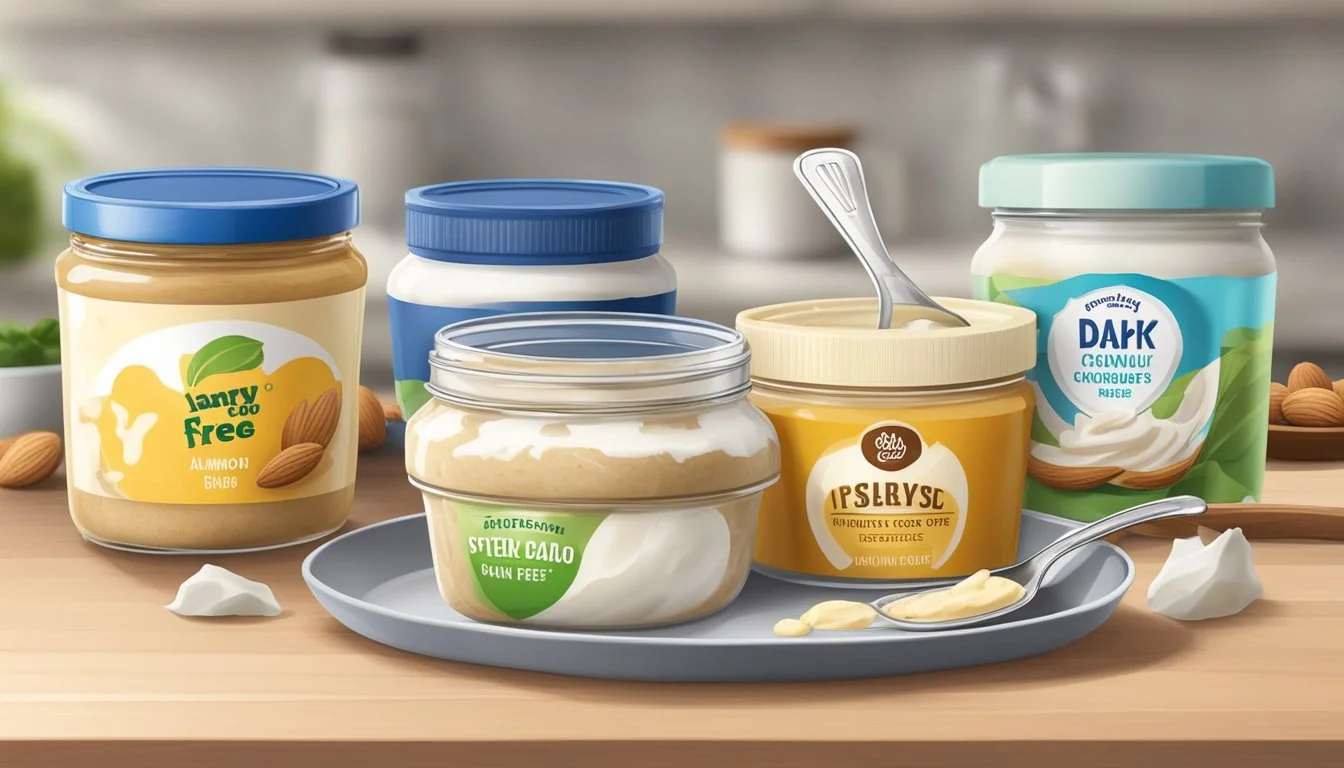What Are Some Lactose-Free Butter Alternatives
Exploring Dairy-Free Options
Individuals with lactose intolerance often seek out dairy alternatives to enjoy the creamy texture and taste without the discomfort associated with lactose consumption. Butter, a staple in many kitchens, is traditionally made from cow's milk and contains lactose, which can be problematic for those sensitive to it. However, the expanding selection of lactose-free butter alternatives now offers a variety of options that cater to both dietary restrictions and culinary needs.
Plant-based butter substitutes have gained popularity for their ability to mimic the properties of traditional butter without the lactose content. These alternatives are made from various sources such as almond, avocado, and olive oils. Not only do they provide a solution for lactose-intolerant individuals, but they also appeal to vegans and those pursuing a plant-based lifestyle. Substitutes like avocado oil-based spreads are noteworthy for their favorable fat content and ability to enhance flavor in cooking and baking.
The market availability of these dairy-free alternatives has increased significantly, making them accessible in most health food stores and large grocery chains. Whether for spreading on toast, sautéing vegetables, or baking delectable treats, lactose-free butter substitutes are versatile and provide a comparable taste and texture to traditional butter. Users can enjoy the gastronomic experience without compromising their dietary choices or comfort.
Understanding Lactose Intolerance
Lactose intolerance affects a significant portion of the population worldwide, leading to a demand for lactose-free alternatives, including butter substitutes. This condition is not the same as a milk allergy, which involves the immune system reacting to the protein casein found in milk.
Definition and Prevalence
Lactose intolerance is a digestive disorder where the body cannot completely digest lactose, the sugar found in milk and dairy products. People with lactose intolerance don't produce enough lactase, the enzyme needed to break down lactose, resulting in digestive symptoms when they consume dairy. This condition is common, especially among adults, with a higher prevalence in some ethnic groups.
Symptoms of Lactose Intolerance
The symptoms of lactose intolerance can vary in severity and usually appear within a few hours after consuming dairy. Common symptoms include:
Bloating
Gas
Diarrhea
Abdominal cramps
Unlike milk allergy, which can cause a severe and possibly life-threatening reaction known as anaphylaxis, lactose intolerance typically causes discomfort but is not generally dangerous. However, it is essential to manage symptoms through diet to avoid discomfort and potential nutritional deficiencies.
Characteristics of Butter
Butter is a traditional fat known for its unique flavor and functional properties in food preparation. Its multifaceted role in cooking and baking is due to its composition and physical characteristics.
Composition of Dairy Butter
Butter is primarily composed of fat (about 80%), water (about 15-18%), and milk proteins (1-2%). Within the fat content, a significant proportion is saturated fat, which contributes to butter’s solid consistency at room temperature. This composition makes butter an excellent source of richness and flavor in culinary applications.
Role in Baking and Cooking
In baking, butter serves not only as a flavor enhancer but also as a leavening agent. When creamed with sugar, it helps to incorporate air and gives a light, airy texture to baked goods. In cooking, the moisture content of butter allows it to form an emulsion, aiding in the creation of sauces and improving the mouthfeel of dishes. Butter’s role is pivotal for its ability to impart a luxurious quality to both savory and sweet creations.
Lactose-Free Butter Alternatives
There are several compelling options for those seeking lactose-free alternatives to traditional butter. From plant-based spreads to animal-derived options, consumers can find products tailored to their dietary needs and preferences.
Plant-Based Butter
Plant-based butters, often labeled as vegan butter, are made from various vegetable oils such as soy, palm, canola, or olive. Brands like Earth Balance offer spreads and Earth Balance Vegan Buttery Sticks, which are ideal for both cooking and baking. These alternatives are designed to mimic the flavor and texture of butter without the use of dairy.
Popular plant-based butters:
Soy-based spreads
Vegan buttery sticks (e.g., Earth Balance)
Olive oil spreads
Nut and Seed Butters
Nut butters, like almond or cashew butter, and seed butters, such as sunflower seed butter, provide a rich, naturally dairy-free alternative. They offer a distinct flavor profile and nutritive benefits including healthy fats and proteins. While not a direct substitute in every recipe, nut and seed butters can replace traditional butter in dishes where their unique tastes complement the other ingredients.
Examples of nut and seed butters:
Almond butter
Cashew butter
Sunflower seed butter
Animal-Derived Alternatives
Ghee and clarified butter, which are lactose-free, consist of pure butterfat from which the milk solids and water have been removed. They have a high smoke point, making them suitable for high-temperature cooking. However, they are still dairy products, so they may not be suitable for those with a dairy allergy or those following a strictly vegan diet.
Animal-derived lactose-free options:
Ghee (clarified butter)
Health and Nutrition
When seeking lactose-free butter alternatives, one should consider both the health impact and nutritional content of the available options. This focus guides a more informed selection that aligns with dietary needs and health goals.
Comparing Fat Content
Butter substitutes vary widely in their fat content and type. The fat found in traditional butter mainly consists of saturated fats. Lactose-free alternatives, such as vegan butters and oils derived from plants, usually offer a different fat profile.
Saturated Fats: Typically seen in high quantities in traditional butter, saturated fats can contribute to elevated cholesterol levels when consumed excessively. Vegan ghee, such as the one offered by Livlo, is a common substitute containing high levels of saturated fat, similar to that found in traditional butter.
Healthy Fats: Alternatives like avocado oil and olive oil contain monounsaturated and polyunsaturated fats, which are considered more heart-healthy compared to saturated fats. These oils can be used as substitutes, respecting the appropriate volume conversion (e.g., replacing 1 cup of butter with 3/4 cups of olive oil).
Proteins and Probiotics
Lactose-free butter alternatives, while not significant sources of protein, can occasionally offer some nutritional benefits that are not present in conventional butter.
Protein: Most butter alternatives provide negligible amounts of protein. They are not usually considered a relevant source of this macronutrient.
Probiotics: Certain plant-based butter alternatives may be enriched with probiotics to aid digestion. However, this is not a universal feature and varies by brand and product.
The focus on probiotics is more prevalent in other types of dairy alternatives, such as lactose-free yogurts, rather than in butter substitutes. When selecting a lactose-free butter alternative, one should not expect a significant contribution of protein or probiotics, but rather make a choice based on the desired type of fats and their impact on health.
Culinary Uses
When exploring lactose-free butter alternatives in cooking, the focus is on maintaining the desired texture and flavor profile of the original recipes. These alternatives can be used in a variety of culinary applications, including baking and sautéing.
Baking with Butter Alternatives
In baking, the correct butter alternative must be chosen to preserve the structural integrity and moisture content of baked goods. Vegan buttery spreads, such as Earth Balance Olive Oil Buttery Spread, are formulated to mimic the creaminess and fat content of traditional butter. Baking recipes often require precise ratios for desired results, hence substitutes should be used in equal measurements. For example, one can use:
Coconut oil: Solid at room temperature, offering rich texture.
Vegan shortenings: Crisco All-Vegetable Shortening or Spectrum's Organic All-Vegetable Shortening perform well in high-heat applications like pie crusts.
Apple sauce: A healthy substitute, providing moisture but altering texture slightly.
Sautéing and Frying
For sautéing and frying, the lactose-free butter substitute must have a comparable smoke point to traditional butter to withstand high-heat cooking without burning. Avocado oil is an excellent dairy-free option due to its high smoke point and mild flavor, making it suitable for both savory and sweet dishes. When sautéing vegetables or proteins, it imparts a slight nuttiness without overpowering the original flavors.
It's essential to consider the smoking point and flavor profile of these alternatives to achieve the desired culinary outcome while adhering to dietary restrictions.
Consumer Considerations
When selecting lactose-free butter alternatives, consumers should examine taste and texture, consider the availability and cost, and account for any dietary restrictions they may have. The right choice will enhance the flavor and consistency of their dishes while fitting into their dietary needs and budget.
Taste and Texture
The taste and texture of dairy-free butter alternatives can vary significantly from the profile of traditional butter. Some plant-based options, like Miyoko’s Kitchen Cultured Vegan Butter, are praised for their creamy texture and flavor, which closely mimics that of real butter, and also possess a high smoke point suitable for baking. Others might offer a more distinct taste or differing texture due to their primary ingredients, such as coconut oil, olive oil, or avocado oil.
Product Base Ingredient Notable Texture and Taste Characteristics Crisco All-Vegetable Shortening Soybean Oil Neutral taste, firm texture Nutiva Organic Vegan Shortening Red Palm and Coconut Oil Rich flavor, creamy texture Earth Balance Olive Oil Buttery Spread Olive Oil Buttery taste, smooth texture
Availability and Cost
Access to lactose-free butter substitutes has improved significantly, with most products available in health food stores, supermarkets, and online platforms like Amazon. Costs can vary, with some brands like Pure Blends Avocado Oil Plant-Based Butter being more affordable and others like certain organic and artisanal varieties coming at a premium. Consumers should expect to spend anywhere from $4 to $10 for a dairy-free butter alternative.
Dietary Restrictions
Consumers with additional dietary concerns beyond lactose intolerance have multiple options. Most dairy-free butters are inherently vegan, yet some brands may include soy or nuts, potentially triggering allergies. For those who are gluten-free, selecting a butter alternative that explicitly states it’s free from gluten-containing ingredients will be key. Numerous brands offer organic options as well, ensuring consumers who prefer organic products can find a suitable alternative.
Dietary Consideration Brand Example Attributes Vegan Earth Balance, Miyoko’s Creamery Plant-based, dairy-free Gluten-Free Melt Organic Plant-Based Butter No gluten ingredients Nut Allergies Pure Blends Avocado Oil Plant-Based Butter Nut-free
Popular Lactose-Free Butter Brands
For individuals with lactose intolerance or dairy restrictions, several brands offer lactose-free butter alternatives. These products often use plant-based ingredients to replicate the taste and texture of traditional butter.
Earth Balance is widely recognized for its range of dairy-free buttery spreads and sticks. The brand's Vegan Buttery Sticks, in particular, are suitable for both cooking and baking, offering a texture and flavor that closely mimics that of real butter.
Another notable brand is Miyoko's Creamery. Miyoko's products, such as its Salted Oat Milk butter, are crafted from a blend of organic ingredients. This particular butter is spreadable, and its taste is appreciated by a wide audience. Miyoko's Creamery products are commonly found in health food stores like Trader Joe's and Whole Foods.
For those seeking a coconut oil-based substitute with a buttery flavor, Nutiva offers an Organic Coconut Oil with Non-Dairy Butter Flavor. It's made with pure, non-GMO, steam-refined coconut oil and is a versatile alternative for sautéing, baking, and spreading.
Here is a summary in table format for quick reference:
Brand Product Type About Availability Earth Balance Vegan Buttery Sticks Plant-based, suitable for cooking and baking Widely available Miyoko's Creamery Salted Oat Milk Butter Organic, spreadable, plant-based Specialized and health food stores Nutiva Organic Coconut Oil with Non-Dairy Butter Flavor Coconut oil-based, buttery flavor Available online and in stores
These brands have carved out a place in the dairy-free market by catering to the needs of those who avoid lactose while seeking the familiar qualities of butter.
DIY Butter Alternatives
Creating dairy-free butter alternatives at home is a simple and effective way to enjoy the richness of butter without lactose. These homemade options cater to dietary needs while offering the flexibility to adjust flavors and ingredients to one's preferences.
Homemade Vegan Butter
Ingredients for Homemade Vegan Butter:
1/3 cup unsweetened, dairy-free milk (soy, almond, etc.)
2 teaspoons apple cider vinegar
1 teaspoon sustainable red palm oil (optional, for color)
1/2 teaspoon xanthan gum or guar gum
1/2 teaspoon salt (or to taste)
1 to 1 1/4 cups of plant-based oils (a blend of coconut, olive, and canola oil works well)
Instructions:
Mix the dairy-free milk with the apple cider vinegar and allow the mixture to curdle, creating a buttermilk-like base.
In a blender, combine the curdled milk, salt, and optional red palm oil. Blend until smooth.
While blending, slowly add in the oil mixture until the liquid thickens, resembling the consistency of softened butter.
Pour the mixture into a container and refrigerate until set.
Simple Ingredient Swaps
For those seeking even simpler alternatives, various single ingredients can serve as substitutes in cooking and baking. Here are some of the most effective one-to-one replacements:
Coconut Oil: Works well in baking and sautéing, providing a slightly sweet and nutty flavor. Ideal for pastries.
Avocado Oil: With a high smoke point, avocado oil is perfect for cooking. It imparts a mild, buttery flavor.
Olive Oil: A healthy alternative for sautéing and dressings, carrying a distinctive taste.
Applesauce: Best for baking, offering moisture with fewer calories. It adds a subtle sweetness.
Mashed Banana: Suited for baked goods where a hint of banana flavor compliments the dish.
Pumpkin Purée: Another baking substitute that adds moisture and a mild, seasonal flavor.
Quick Reference Table for Ingredient Swaps:
Ingredient Best Used In Flavor Profile Notes Coconut Oil Baking, Sautéing Sweet, Nutty Solid at room temperature, similar to butter Avocado Oil Cooking Mild, Buttery High smoke point Olive Oil Sautéing, Dressings Distinctive Liquid at room temperature Applesauce Baking Subtly Sweet Reduces fat content Mashed Banana Baking Banana-tinged Sweet Adds natural sweetness Pumpkin Purée Baking Mild, Seasonal Adds moisture
When one uses these dairy-free alternatives, they impact the flavor and texture of the final dish, making each culinary creation uniquely delightful.
Alternative Dairy Products
For individuals seeking lactose-free options, a variety of dairy-free butter alternatives are available, offering the richness and flavor suitable for various cooking and baking needs.
Milk and Cheese Substitutes
Dairy-free milk alternatives are plentiful and can cater to different nutritional needs and flavor preferences. The most common plant-based milks include:
Soy Milk: Rich in protein and often fortified with vitamins and minerals.
Almond Milk: Low in calories and has a nutty flavor.
Coconut Milk: Offers a creamy texture and tropical taste.
Oat Milk: Known for its natural sweetness and being good for frothing.
Rice Milk: The most hypoallergenic of milk substitutes, with a naturally sweet taste.
Hemp Milk: Provides a hearty dose of Omega-3 fatty acids.
Cheese alternatives that are lactose-free often utilize nuts, soy, and root vegetables to mimic the texture and taste of traditional cheese. They can be found in various forms such as shreds, slices, and blocks. Popular ingredients for these substitutes include:
Cashews: For creamy spreads and soft cheeses.
Almonds: Used in making firm, aged cheese alternatives.
Tapioca: Provides a stretchy quality similar to that of melted cheese.
Nutritional Yeast: Offers a cheesy flavor suitable for sauces and seasoning.
These dairy-free options provide versatility in the kitchen, allowing for lactose-free cooking without sacrificing flavor.
Baking without Butter
When baking without butter, individuals have several lactose-free alternatives that can be used to create delicious, non-dairy confections. It is important to maintain the balance between wet and dry ingredients when substituting to avoid a dry or flat outcome.
Canola Oil: A neutral oil that can be a direct substitute for butter. When using oil in place of butter, use about 3/4 the amount since oil has a higher fat content.
Avocado: Mashed avocado provides moisture and a subtle flavor. It works especially well in chocolate recipes and is full of healthy fats.
Mashed Bananas: A great choice for sweetness and moisture, mashed bananas can replace butter in a 1:1 ratio, also adding nutritional value to baked goods.
Here is a quick reference for substituting butter in baking:
Butter Substitute Ratio to Butter Best Used In Canola Oil 3:4 Breads, muffins Mashed Avocado 1:1 Chocolate desserts, cookies Mashed Bananas 1:1 Pancakes, quick breads
For those engaged in plant-based cooking, exploring gluten-free options, or monitoring sugar intake, these substitutes can be seamlessly integrated without compromising the structure or flavor of the finished product. Using these alternatives often requires an adjustment to baking times and temperatures as well, so bakers are encouraged to monitor their creations closely.
Selecting the Right Alternative for Your Needs
When it comes to lactose-free butter alternatives, the selection process should focus on dietary needs, personal health goals, and culinary preferences. It's essential to understand the various plant-based ingredients that can mimic butter in terms of flavor and texture while providing healthy fats without lactose.
Health Considerations: For those prioritizing healthy fats in their diets, alternatives such as olive oil blends and avocado-based spreads offer monounsaturated fats, which can be beneficial for heart health. Consumers should always check the nutritional information to ensure the product fits within their dietary requirements.
Butter Alternatives:
Vegetable oil blends: Often made with a mixture of oils such as canola, palm, and olive, these blends are designed to provide a spreadable consistency akin to traditional butter.
Coconut oil: It's solid at room temperature, allowing it to mimic butter in baking and cooking, though it imparts a distinct coconut flavor.
Nut butters: Options like cashew and almond butter not only act as spreads but also contribute a dose of protein.
Plant-Based Ingredients to look out for in alternatives:
Tapioca: A starch used for its thickening properties, providing a creamy texture.
Soy lecithin: An emulsifier from soy that helps to blend water and oil, mimicking the consistency of butter.
Here is a simple table to compare common butter alternatives:
Alternative Main Ingredient Healthy Fats Best Used For Vegetable Oil Blend Various Oils Varies Spreading, Cooking Coconut Oil Coconut Saturated Baking, Frying Nut Butters Nuts Monounsaturated Spread, Snacks
Consumers should select products that meet their specific needs, whether that's a spread for toast or an ingredient for baking. It's also important they consider potential allergies, as some alternatives such as nut butters may not be suitable for individuals with nut allergies.
Conclusion
For individuals seeking lactose-free alternatives to butter, the market offers a variety of options that can be easily found in local health food stores and larger grocery chains. Options like plant-based butters that use oils such as avocado, olive, or coconut as their primary ingredients provide a close mimicry to traditional butter in terms of texture and function in recipes. These substitutes support a dairy-free lifestyle and cater to those with lactose intolerance or allergy concerns.
These alternatives are not only functional in cooking and baking, but also beneficial in contributing to a more plant-oriented diet. The majority can be utilized as a direct one-to-one replacement, making them convenient for everyday use.
Here is a succinct overview of popular substitutes:
Avocado Oil: A heart-healthy choice with a high smoke point, suitable for high-heat cooking and baking.
Margarine Variants: Non-dairy versions exist that perform similarly to traditional butter in various culinary applications.
Consumers are encouraged to experiment to find the product that best suits their taste preferences and cooking needs. Each alternative offers a unique profile in terms of taste and nutritional benefits, which can enhance the dining experience while maintaining dietary requirements.











